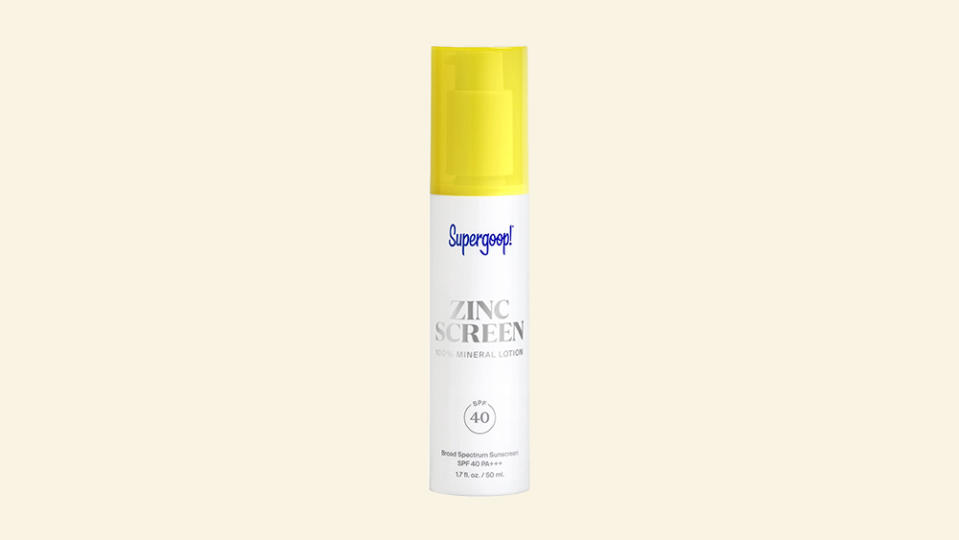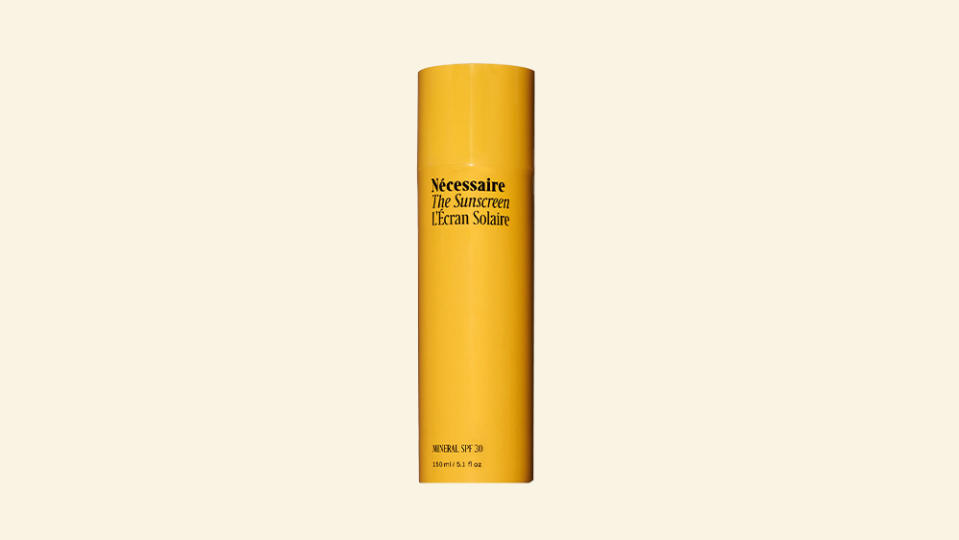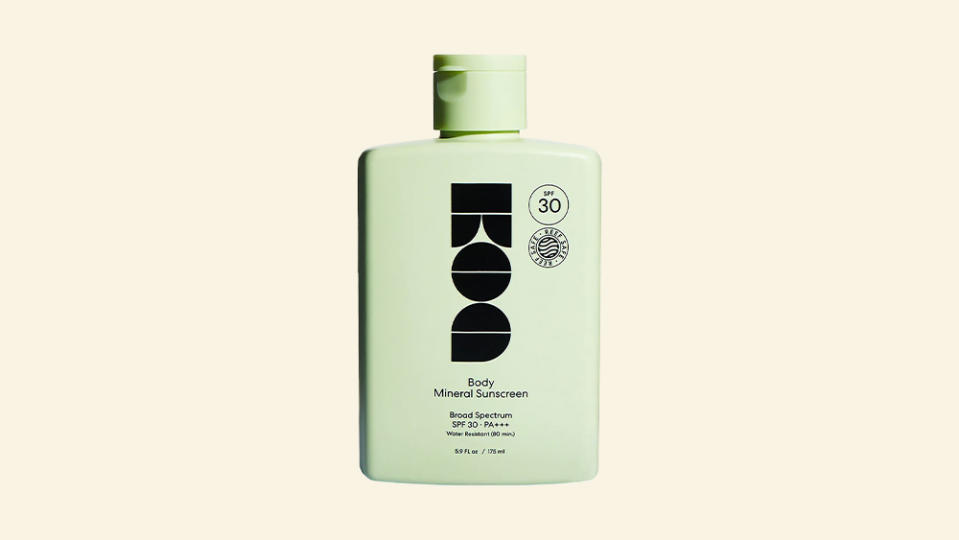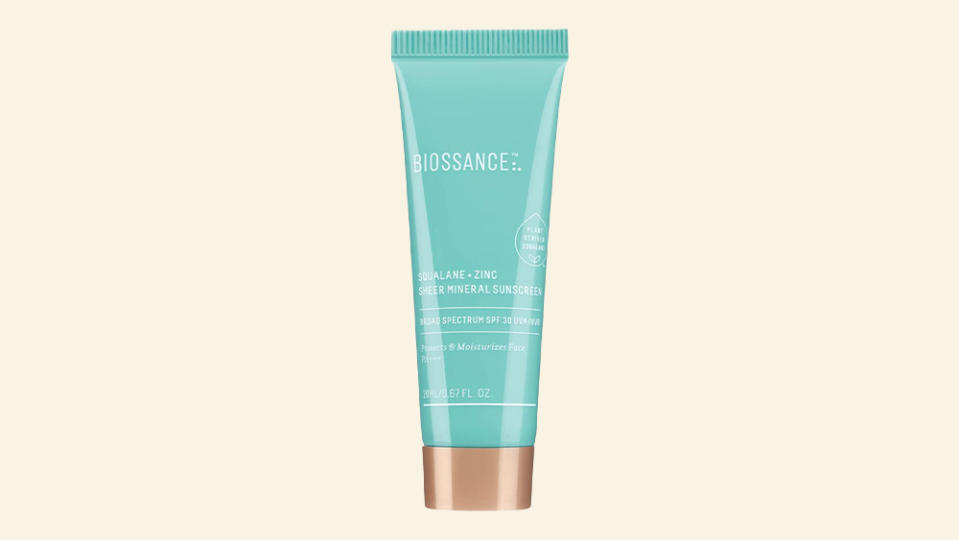The 4 Best Sunscreens to Wear This Summer, and How to Apply Them—According to a Pro Dermatologist

Most people will tote sunscreen to the beach or slather it on on days when they’re spending lots of time outdoors—and rightfully so. But few of us choose our SPF with a critical eye: No two of these products are the same, and some are most certainly superior to others in terms of their efficacy and safety. And while any SPF is better than no SPF, it’s still a good idea to know the basics of what’s on a sunscreen label so you can make an informed decision. For starters, SPF, or Sun Protection Factor, is not the only measurement that everyone should use to judge a product’s power.
To decode the acronyms and initialisms you’ll find as you search for the best sunscreens for your face and body, we spoke with SPF aficionado and board-certified dermatologist Dr. Heather Rogers of Modern Dermatology in Seattle, who is also the founder of Doctor Rogers skincare. In addition to her guidance, we’ve also included some of the sunscreens that pass her rigorous standards. But first, a few quick tips about sunscreen—from selection to application—from the doc herself.
More from Robb Report
How Topical Finasteride Helps You Regrow--and Keep--Your Hair
Robb Recommends: The Doctor-Backed Skincare Line That Makes It Easy to Customize Your Routine
A Dermatologist’s Sunscreen Application Tips
There’s a reason that Rogers and other board-certified dermatologists sound like a broken record when it comes to SPF: They all spread the gospel of the American Academy of Dermatology (AAD) on the matter. Here are five application tips that the AAD and its members subscribe to.
Apply and reapply generously (every 2 hours): “The AAD recommends one ounce (a shot glass) for each application for an adult in a bathing suit,” Rogers says. “For the face, you need ¼ teaspoon, or a nickel size amount, or ‘two fingers’ for proper coverage.” Two fingers means a line of sunscreen that runs the length of your middle and index fingers. You should also re-apply SPF every two hours in order to give your skin a consistent level of protection—no matter SPF value of the product you’re using (more on those numbers later). “Higher SPF gives a false sense of security,” she adds. “You have to reapply every two hours if you are using an SPF 30 [or an] SPF 100.”
SPF 30 is the bare minimum: SPF 15 is fine, but if you’re serious about all the benefits of wearing sunscreen, you’ll want to wear at least SPF 30. We’ll get into why in our explanation of SPF numbers below.
Cover all exposed skin: While we talk a lot about protecting the face from UV-ray-induced signs of aging, you still need to protect the rest of your outer shell. But you can accessorize here, too: “Often it is easier to cover up other parts of the body with hats, sunglasses, protective clothing, and shade,” Rogers reminds us.
Wear SPF year round: Rogers notes that 80 percent of UV rays can penetrate through clouds, even on rainy days—and that UVA rays penetrate through windows. “You need sunscreen when it is cloudy and you need sunscreen when you are inside,” she says. Perhaps this is confusing because we mistake the presence of the word “sun” in “sunscreen” but try to think of these products instead as “UV screen” instead.
Use only broad-spectrum sunscreens: “Broad-spectrum” means that the product defends skin against both types of UV rays present in our atmosphere—UVA and UVB rays.
What Does SPF Measure?
There’s a common misconception that SPF values indicate how long you can stay in the sun. What’s doubly confusing is that the SPF intervals (15, 30, 50, etc.) are measurements of how much longer that product would protect you from being burned by UVB rays by comparison to nothing at all. (So, SPF 15 in theory would prevent burns for 15 times longer than if you were in the nude.) However, the efficacy of these products weakens over the time you’re wearing them. “While a higher SPF does provide better protection against UVB rays, it starts to break down the moment it gets in the sun,” Rogers says. “So, yes, it is SPF 50 at the first minute—but not a minute 60.”
It’s best to think of SPF as a measurement of the level of protection you’re getting during the two hours between fresh applications. The AAD says that SPF 30 will provide you with a fairly adequate level of coverage (97 percent) against UVB rays—the ones that cause burn and skin cancer. (UVA rays are the ones that cause “signs of aging” like fine lines, wrinkles, sun spots, roughness, etc.) Compare that to SPF 15, which blocks just 93 percent of UVBs. As for the higher numbers, SPF 50 will shield 98 percent of UVBs rays and SPF 100 will shield 99 percent of them. This is why SPF 30 is seen as the minimum, as the benefits only increase incrementally from there. It may be wise for someone with very fair skin and extreme sensitivity to opt for the higher intervals, but for most people, the difference won’t be huge.
And don’t forget Rogers’ and the AAD’s reapplication advice: “You still have to reapply sunscreen every two hours and seek shade during peak hours, regardless of the SPF level,” she says.
What is PA+?
If SPF shields you from UVB rays, then what about UVA rays? After all, UVAs are responsible for making skin more tan, as well as signs of aging like wrinkles, fine lines, rough texture, and so forth. On sunscreen labels, UVA defense is measured by PA+ (short for “Protection Grade of UVA”). You will see these two letters followed by between one and four “plus” signs. Ideally, you will find something with the maximum number, PA++++, because it offers at least 94 percent defense against UVA rays. Rogers says PA+++ is deemed adequate too, thanks to its 88 percent to 94 percent coverage, while the lesser values of PA++ (75 percent to 88 percent )and PA+ (50 percent to 75 percent) can be written off.
Many brands don’t make the PA distinction clear on their labels, so be sure to search for ones that do—and that offer PA++++, Rogers suggests.
What Is the Difference Between Mineral and Chemical Sunscreen?
Every UV-shielding product will include at least one active ingredient that acts as the sunscreen agent. These ingredients will either be mineral-based (zinc oxide or titanium dioxide) or chemical-based (including avobenzone, octisalate, and octocrylene). Mineral shields reside on the outside of skin, and they deflect UV rays to prevent absorption and damage. Chemical SPFs absorb into the skin, and in turn absorb the UV rays, thus neutralizing them to prevent damage. Naturally, most dermatologists will advocate on behalf of the mineral options. (These will often be called “physical” or “natural” in addition to “mineral”.)
“Mineral sunscreens offer immediate broad-spectrum protection and are well-tolerated by those with sensitive skin,” Rogers explains. “But they are often less cosmetically elegant to the purely chemical formulas.” And while many reputable brands are selling chemical sunscreens that have been deemed safe by the FDA, there is still a potential risk: Rogers notes that chemical filters (specifically oxybenzone, octinoxate, and homosalate) have all been shown to accumulate in the body over time. “Traces of these chemicals are detected in human urine, blood, and/or breast milk. They are also linked to hormone disruption, cell damage, and found to be toxic to certain marine organisms including coral reefs,” Rogers says. Easy sell for the mineral picks…
To that note, try to choose one with at least 10 percent non-nano zinc oxide defense, she adds. “Both zinc oxide and titanium dioxide are effective mineral sunscreen ingredients, but zinc oxide has an edge over titanium dioxide as it provides more complete coverage across the UVA spectrum.” The “non-nano” part refers to the particle size of the defensive shield. Anything with nano zinc or titanium particles can potentially be absorbed into the skin, as well as causing havoc on marine life.
What Is the Difference Between Face and Body Sunscreen?
You’ll notice many sunscreen products are advertised specifically for the face or the body—or in many cases, for both. This is a matter of sensitivities: “The skin on our face is generally more sensitive and prone to breakouts than the skin on our body,” Rogers says. “Face sunscreens are often designed to be lightweight, non-greasy, and non-comedogenic. They may also contain additional skincare ingredients, such as antioxidants.” This often explains why they have higher prices, too: “People will spend more money on face products,” Rogers adds. You may see some facial moisturizers that provide SPF defense too, which are adequate shields for average weekday wear; during long stretches of time spent outdoors (especially in the sun), be sure to layer up with proper facial sunscreen.
One key element of body sunscreens is that they are often water- and sweat-resistant, Rogers says, since the body is more prone to sweat during outdoor activities. “They also often have a thicker texture or are designed to be more moisturizing, as the skin on the body tends to be drier than the skin on the face,” she adds.
How Is a Suncreen’s Level of Water Resistance Determined?
The entire category of “Sport Sunscreens” tends to provide water and sweat resistance as a baseline, though many standard-fare SPFs also do the same. Perhaps you have noticed already, but there are only two different levels of water resistance that brands are currently allowed to advertise: Water resistance up to 40 minutes, or up to 80 minutes. Any brand that wants to tout its water resistance abilities needs to pay for a very expensive round of FDA testing in order to make any such claims. If they clear the 40-minute mark, they can claim resistance for up to 40 minutes. If they clear 80—and no matter no much they clear it—then they can tell customers that their product provides water resistance (which should not be confused with waterproofness) for as much as 80 minutes.
“In these tests, volunteers are immersed in water for a set amount of time and then exposed to UV radiation to determine the amount of sunscreen protection that remains on the skin,” says Rogers. “The reason why brands are not allowed to make claims of water resistance beyond 80 minutes is because this is the maximum amount of time that sunscreen protection can be maintained under the testing conditions. Beyond 80 minutes, it’s considered that the effectiveness of the sunscreen may begin to decline, and reapplication is necessary to maintain protection.” So, when at the beach, reapply sunscreen after any exposure to water or sweat unless its water resistance has been advertised. Assuming you applied the product just before getting in the water, you should have protection for as long as 40 or 80 minutes during the activity, after which it is time to dry off and reapply.
The Best Sunscreens That Pass This Dermatologist’s Filters
We’ll keep this straight to the point: Based on Roger’s parameters here, the most ideal sunscreen products will have at least:
Broad-spectrum UVA/UVB defense with minimum SPF 30 and PA+++
Purely mineral (and non-nano) formula with at least 10 percent zinc oxide
80 minutes of water resistance if swimming or sweating
“This is not because dermatologists are lame but because we want you to age well,” Rogers assures. “It is so much easier to prevent skin damage than to correct it.” To the note about mineral products, she adds this: “People are allowed to have their favorites, whether they be chemical- or mineral-based. But what matters most is getting it on and getting it on well.”
With all of the above in mind, here are four sunscreens that clear the bar.
Best Face Sunscreen
Supergoop Zincscreen 100% Mineral Sunscreen lotion SPF 40 PA+++

Buy Now on Nordstrom:
Best Body Sunscreen
Nécessaire Mineral Body Sunscreen SPF 30 PA+++

Buy Now on Amazon:
Best Sport Sunscreen
KOA Body Mineral Sunscreen SPF 30 PA+++

Buy Now on Nordstrom:
Best Sunscreen for Sensitive Skin
Biossance Squalane + Zinc Sheer Mineral Face Sunscreen SPF 30

Buy Now on Amazon:
Best of Robb Report
Sign up for Robb Report's Newsletter. For the latest news, follow us on Facebook, Twitter, and Instagram.

